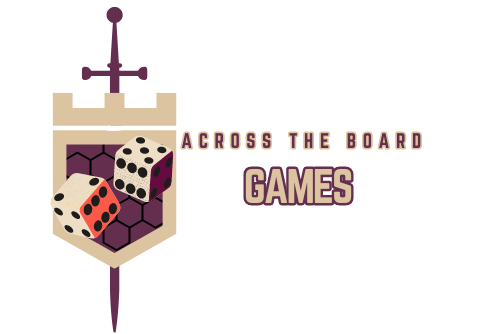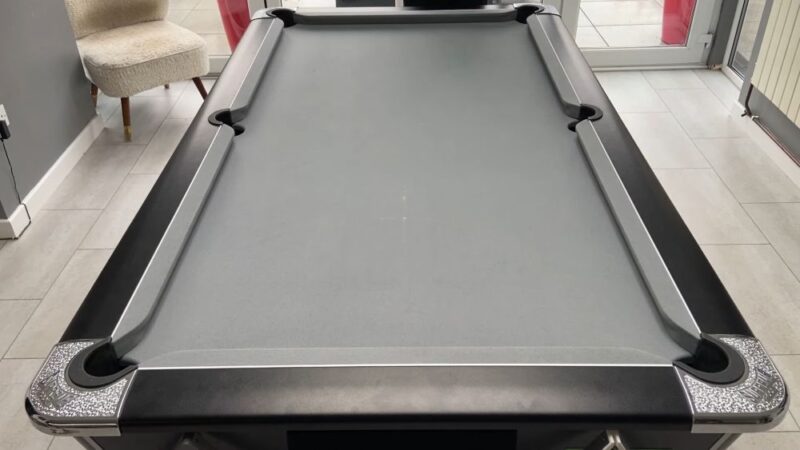Pool is a game that has changed over generations, offering both casual entertainment and serious competition. Central to the game is the pool table, a piece of equipment whose size can deeply influence gameplay.
Whether you’re setting up a game room, furnishing a recreational facility, or simply researching the world of billiards, understanding the standard size of a pool table is crucial.
Now, we will discuss various dimensions of standard pool tables, shedding light on how size affects play and helping you make informed decisions for your specific needs.
The Importance of Table Size
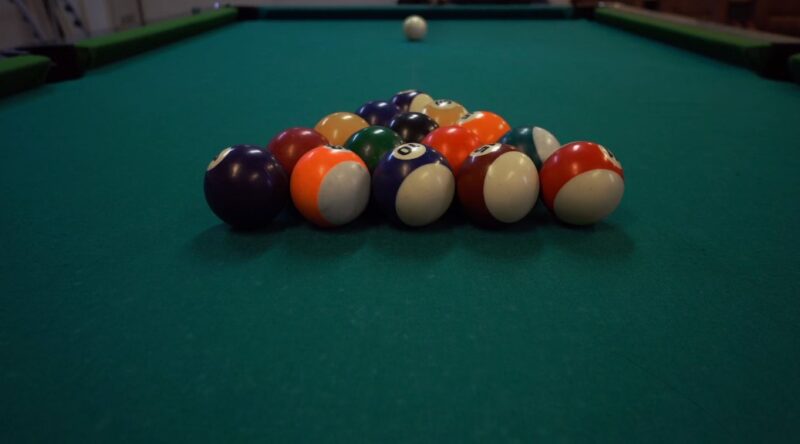
The size of the table can drastically influence gameplay. A larger table can be more challenging due to the increased playing area, requiring players to use more precision and strategy.
The variety of pool table sizes is vast, which is indicated by the market worth. In 2022, the global pool tables market has touched $265 million in 2022.
On the other hand, smaller tables might offer quicker games, making them suitable for casual plays and tighter spaces.
When deciding to purchase a table, it’s essential to consider the space it will occupy. Besides the table’s size, one must account for enough room to move around and execute shots without hindrance.
Thus, understanding table dimensions is pivotal in ensuring a seamless playing experience.
Standard Table Dimensions
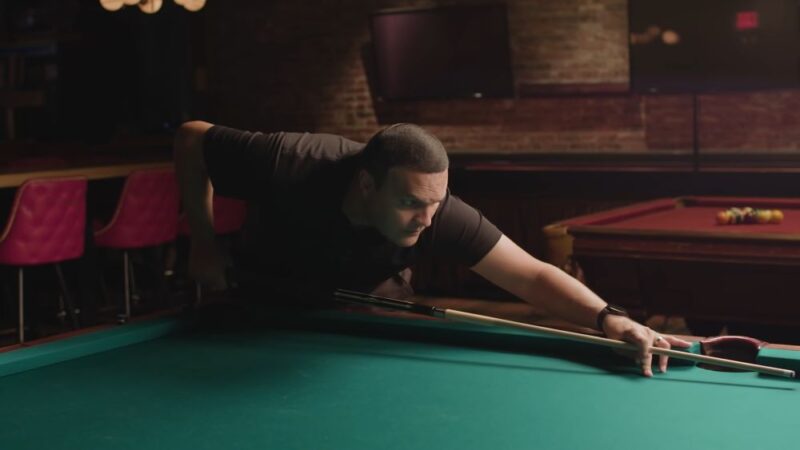
The most commonly recognized standard size for professional tournaments and official play is the “regulation” full-size table.
| Table Type | Dimensions |
|---|---|
| Regulation Table |
|
| Bar/Pub Table |
|
Factors Influencing Table Choice
The choice of table size often correlates with the purpose of its use and the skill level of the players. Beginners might find smaller tables like the six-foot or bar tables more approachable.
On the other hand, professionals or serious enthusiasts might lean towards regulation or eight-foot tables to hone their skills.
The cost of tables can vary based on size, brand, and other additional features. Typically, regulation tables tend to be pricier due to their larger size and often superior build quality.
Those on a tighter budget might consider bar tables or six-foot tables, which are generally more affordable.
Maintenance and Longevity
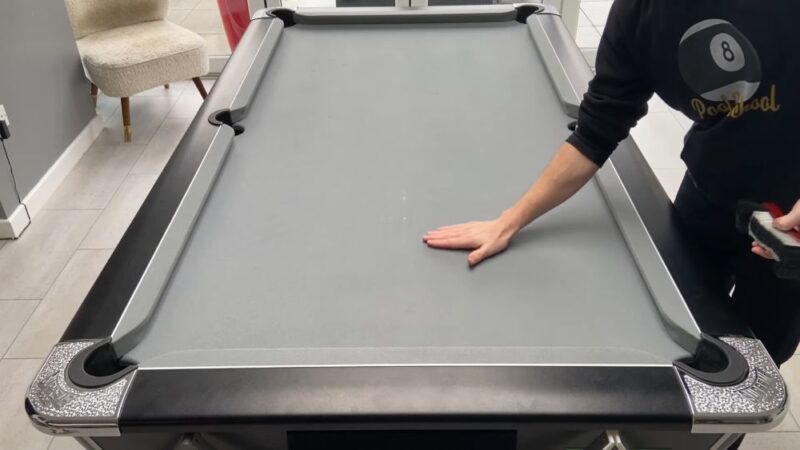
Irrespective of the table size, maintaining its surface is crucial for optimal gameplay. Regular cleaning, avoiding spillages, and ensuring a level surface can enhance the table’s lifespan.
Use a soft brush to remove chalk residue and dust, and consider using a pool table cover when not in use.
Tables might require repairs or replacements, especially the felt surface. Bigger tables might have slightly higher maintenance costs due to the larger surface area. Investing in a good-quality table from the start can mitigate frequent repair needs.
Accessories and Setup
For any table size, certain accessories are pivotal.
These include:
- Pool cues of varying lengths.
- A set of billiard balls.
- Triangle or diamond racks.
- Chalk for cue tips.
Once you’ve chosen your desired table size, ensure that it’s correctly installed and leveled. This is paramount for fair gameplay. Some tables come with adjustable legs or require professional installation to ensure a perfectly flat playing surface.
The Evolution of Pool Table Sizes
Pool, or billiards, has a rich history that dates back centuries. The size and design of tables have evolved over time, adapting to the societal norms, available spaces, and changing gameplay rules.
Earlier tables, particularly in the 18th century, were smaller and often had wooden beds instead of slate. As the game gained popularity and dedicated billiard rooms became a trend, the size and specifications of the tables evolved.
While historical tables were more ornate, with intricate carvings and designs, modern tables are a blend of functionality and aesthetics.
The evolution in sizes has not only been influenced by professional gameplay standards but also by the modern-day emphasis on interior design and space optimization.
Customization and Unique Table Designs
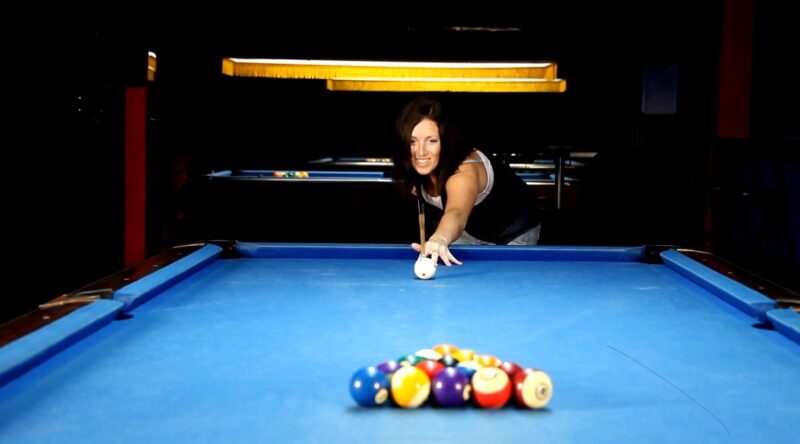
Beyond the standard sizes, there’s a niche market for custom-designed pool tables. Craftsmen and artists collaborate to create unique tables that reflect personal tastes, cultures, or themes.
These tables, while functional, also double as statement pieces or works of art in homes or establishments. For those with unique requirements or space constraints, custom tables of non-standard sizes might be a solution.
Whether it’s a circular table, an unusually long table for a specific game variant, or a table tailored for a particular room, the world of customization offers endless possibilities.
Other Notable Sizes
Now, let us take a look at two most prominent sizes.
Eight-Foot
Often referred to as the “eight-footer”, this table size bridges the gap between the regulation and bar table sizes. Ideal for those seeking a challenging yet not overly professional experience.
Its dimensions are:
- 8 feet long by 4 feet wide.
- Playing area dimensions sit at approximately 88 inches by 44 inches.
Six-Foot
Ideal for home use, especially when space is a constraint, the six-foot table offers a compact solution for pool enthusiasts.
The measurements for this table are:
- 6 feet long by 3 feet wide.
- Playing area dimensions are roughly 66 inches by 33 inches.
FAQs
Is there a significant difference in gameplay between different table sizes?
The size of the table can influence the game’s pace and difficulty. Larger tables might require more precision and strategy due to the extended playing area, while smaller ones can offer quicker, more casual games.
Are there other sizes besides the standard ones mentioned?
While the sizes covered are the most common, there are manufacturers who offer non-standard sizes and shapes, especially in the realm of custom-designed tables.
How often should I replace the felt on my pool table?
The frequency depends on usage and care. In general, for heavy use, replacing the felt every 1-3 years is recommended, but with lighter use and proper care, it can last much longer.
Does the size of the table affect its maintenance and care?
Larger tables might have slightly higher maintenance costs due to the increased surface area, but the principles of care remain consistent across sizes.
Are there tables designed specifically for home use?
Yes, six-foot tables and some seven-foot tables are often marketed for home use, as they fit comfortably in many residential spaces without compromising too much on the gameplay experience.
The Bottom Line
While the standard sizes – ranging from the professional regulation table to more compact six-foot variants – serve as foundational knowledge for enthusiasts and players alike, the landscape of pool tables extends far beyond these measurements.
From custom designs that cater to personal aesthetics to forward-thinking models that incorporate technology, the pool table world is expansive and diverse.
Regardless of the size or design, the essence remains constant: to offer a platform for skill, strategy, and countless hours of enjoyment
